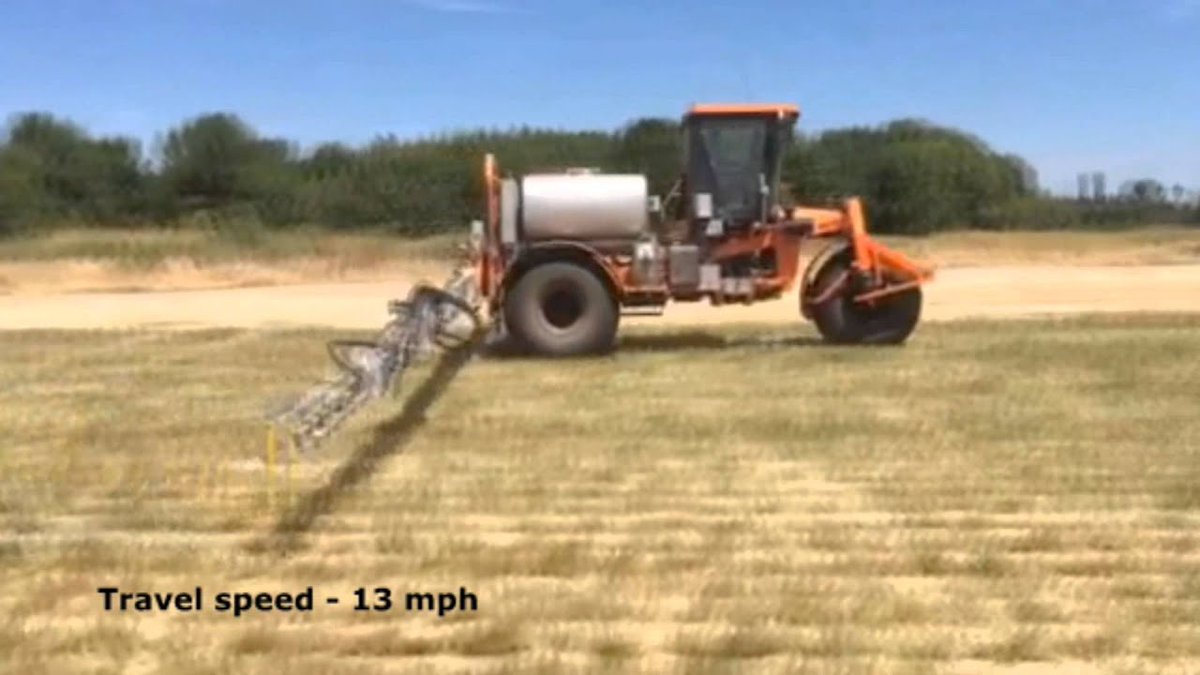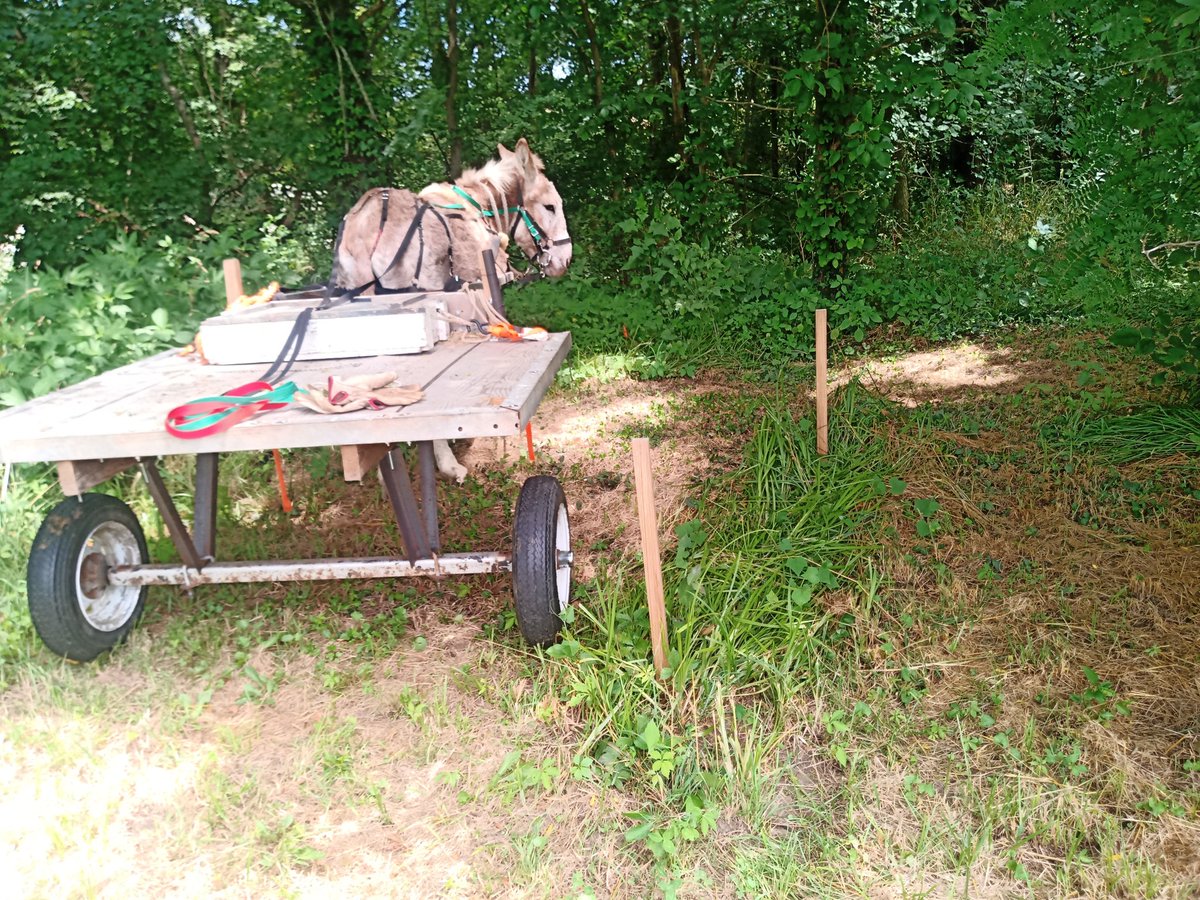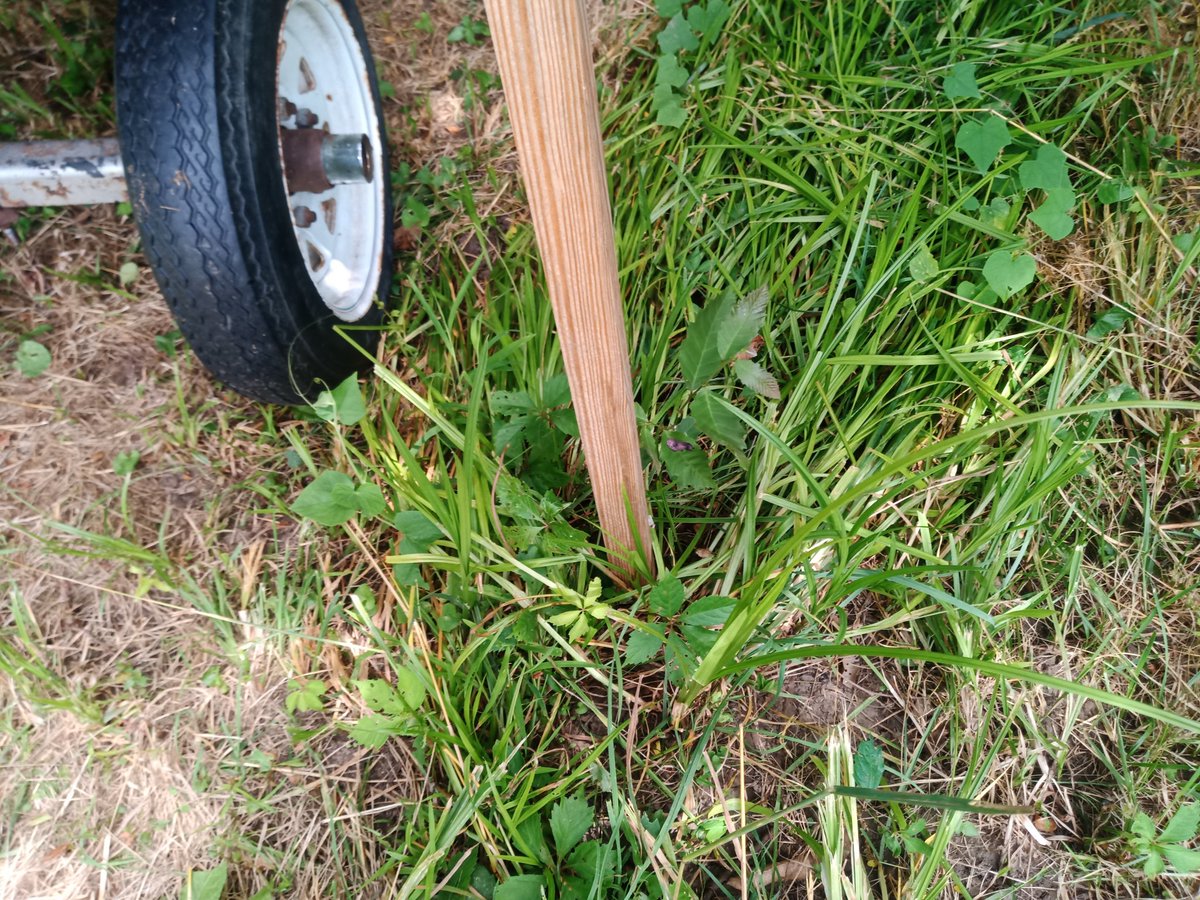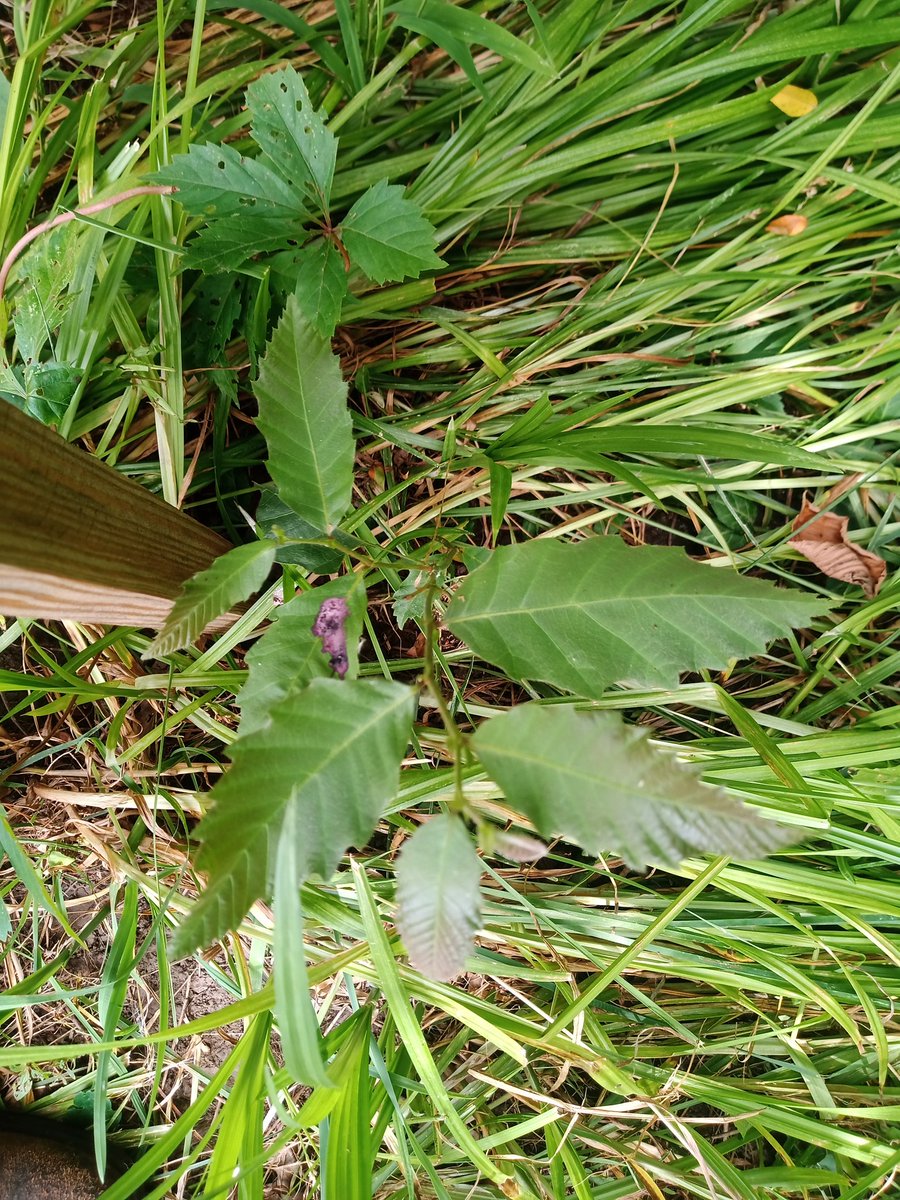We& #39;ve got three little rectangular fenced yards, each about the size of a good-sized suburban yard in Johnson County, Kansas, one twice as long as the other, which I think used to be a farmstead of its own.
They& #39;re attached to the property across the road, which G bought separately from the home ten we live on. Used to be a separate farm. This ten probably owned the 80 or 160 that extends back thataway. Other way.
3. She& #39;s owned this farm longer than I& #39;ve known her. I& #39;m not kidding when I say it& #39;s hers. This agroforestry / perennials / thing is new. We just learned about it quite recently, at our age. I guess that& #39;s why I& #39;m such an evangelist for it. Somebody opened my eyes.
4. These three lots are poor. The top one, where the house probably was, grows only the sparsest grass. People still hayed it - it& #39;s got to be mowed or it grows up in thorn trees. Hay pays for mowing it. Further impoverishing the land.
5. The years when we had to work in the city finally ended, which is a story in itself. I sometimes speak of the bad years, but they are past. When you& #39;re a smallholder with a full-time job in and around Kansas City, you& #39;re gone 11 hours a day, five days a week.
6. Caring for the land is a full time job. This thing people do with huge tractors and GPS& #39;s and spray buggies isn& #39;t caring for the land.
- if I may digress - since I live surrounded on three sides by one individual, family-owned, commercial / industrial farm, grain and cattle,
- if I may digress - since I live surrounded on three sides by one individual, family-owned, commercial / industrial farm, grain and cattle,
7. The daughter of one county settler old farm family married to the son of another, between them inherited enough land to farm full time after Medicare kicked in. Up til Medicare age she had to teach school so they could have insurance.
8. The first thing they do every spring is kill every square inch of their cropland. Kill. Every. Living. Thing.
This is called "conservation no-till".
Got this big thing called a spray buggy sprays poison. Kill every living thing. (Not his, just an example)
This is called "conservation no-till".
Got this big thing called a spray buggy sprays poison. Kill every living thing. (Not his, just an example)
9. That is to make soybeans. It& #39;s not widely understood, but corn and soybeans are just these packages of carbohydrates and lesser chemical components and they are made into the shit America eats. Like petroleum, they refine it down to component parts and then reassemble. IFS.
10. Roughly 55% of the land surface of the United States is managed in some analogue of this exact same system.
Kill everything every spring.
This cannot be made to work over the long haul. Anybody who said it could was either misinformed or lying.
Kill everything every spring.
This cannot be made to work over the long haul. Anybody who said it could was either misinformed or lying.
11. So, anyway - she owned it, and she had a full-time job, and local farmers - good, honorable people, still friends of ours - managed it like their daddies taught them, in traditional hay and cattle management ways. She had goats and sheep - like, 100 angora goats for mohair -
12. But all that was on the home ten, with old guys haying and mowing and splitting the hay with her, running their cattle part of the year by agreement on her 18 - and these two lots were just too steep, and too hard, and too rocky, and too junky, to mow for hay, so
Thorn trees.
Thorn trees.
13. I made this video over there. Doing what Abe & I did today. https://youtu.be/KIqtVZrmBmo ">https://youtu.be/KIqtVZrmB...
14. What I& #39;m doing is pruning thorn trees, getting the branches up where I can easily work under them.
Besides being grown up in thorn trees, it was like a lawn of poison ivy knee high. Nearly a pure stand.
Besides being grown up in thorn trees, it was like a lawn of poison ivy knee high. Nearly a pure stand.
15. I mowed - and continue to mow - the poison ivy lawns, which now are mostly other things, with the poison ivy set back.
Poison ivy *really likes* CO2. Not all plants are that crazy about the excess, but poison ivy is.
You can pretty much turn ground to grass by mowing.
Poison ivy *really likes* CO2. Not all plants are that crazy about the excess, but poison ivy is.
You can pretty much turn ground to grass by mowing.
16. Welp, I& #39;ve been summoned. Animals need feeding, and management is knee deep in a weeding project. Later.
17. We& #39;ve each got our little batch of critters we feed. But she works longer and harder than I do so sometimes she asks me to babysit.
So anyway...
So anyway...
18. Honeylocust trees are not without value. H/T @BuildSoil for some good info on that. This is poor soil, and these legumes fix nitrogen. But the blasted things will grow thorny branches to within a foot of the ground. I need to maintain the understory. Poison Ivy doesn& #39;t cut it
19. I plan to harvest a couple of saplings to make cart shafts out of. Honey locust is pretty tough and doesn& #39;t rot quickly. But meanwhile it& #39;s this long process of pruning all the low growing branches off them, forcing them to form a canopy before they otherwise want to.
20. Abe always helps me prune. I cut the branches off in easily handled shapes. Thorny branches tangle up with other thorny branches when piled up, so there is a certain modest skill to this.
I pile the branches on Abe& #39;s cart as I cut them. I tie him, I& #39;m tired of walkaways.
I pile the branches on Abe& #39;s cart as I cut them. I tie him, I& #39;m tired of walkaways.
21. I bought him some goodies that are mostly grass hay, so I can give him all I want. Standing calmly for longer times is always a goodie. And I& #39;m teaching him lines and the bit. And I think today something went click in his brain.
22. Ideally you want the *absolutely smallest* pressure you can possibly apply to the bit. He just - it& #39;s hard to explain. Developed power steering.
Here you can see his lines, the red-and-green pile on the cart near the back.
The red one goes to his right side. I made them.
Here you can see his lines, the red-and-green pile on the cart near the back.
The red one goes to his right side. I made them.
23. Oh by the way, we found a chestnut sprout there. Where he& #39;s standing above.

 Read on Twitter
Read on Twitter





